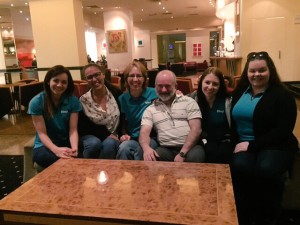
I was on the journey of a lifetime – travelling to Perth for an enormous week of engaging, learning and networking. The chance to share this experience with like-minded pre-service teachers Karen, Shawtima, Gay, Nick and Ally added to the excitement the week had in store. Though it was an overcast reception at Perth, we managed to explore Kings Park amid the showers of rain.
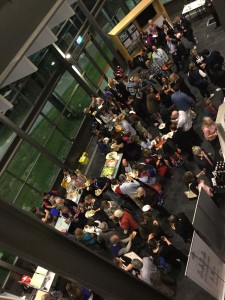
CONASTA 64 began with a warm welcome function at the recently opened Central Institute of Technology, East Perth Campus. We were thrilled to meet Robyn Aitken, president of the Australian Science Teachers Association (ASTA). It was incredible to listen to the personal stories of science teachers who were keen to pass on their words of wisdom.
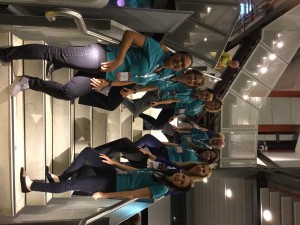
As each person brought with them a vast range of experiences, CONASTA was a great time to gather and share ideas, resources and stories. I was extremely honoured to be in the presence of so many passionate science teachers who are keen to see the increase of Science, Technology, Engineering and Mathematics (STEM) education across Australia.

During meal breaks over the week, the trade displays provided an opportunity to hear from various organisations about the fantastic activities and resources they provide. The insight gained from the display holders was an extremely valuable addition to my scope of knowledge.
MONDAY
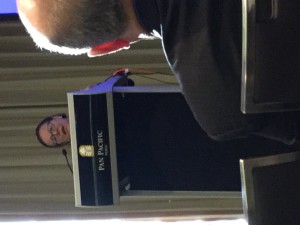
The first day started strong with a keynote by Professor Fiona Wood who discussed ‘Striving for excellence in health care’. Prof. Wood emphasised that harnessing the power of science and technology into clinical practice is an ever-increasing challenge and that STEM is fundamental to the future. She emphasised that “opportunities that make you nervous are the ones to go for”.
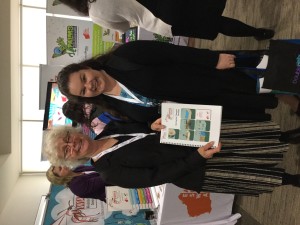
A fascinating workshop was conducted by Julia Ferguson (Woodside Australian Science Project (WASP)). WASP supports the delivery of Earth Science components that align with the Australian Curriculum. The workshop explored ‘How volcanoes, earthquakes and wild weather can change our world’. Participants were gifted a ‘Geological Changes’ package which included six topics and contained informative sections of teacher notes and student activities. The student activities included various responsive questions, but also included experiments. Julia emphasised the importance of great experiments to be:
- Observable
- Measurable
- Repeatable
 The volcanic eruptions topic contained links to downloadable models of strato volcanoes and shield volcanoes. One experiment in this topic was to observe the reaction of lava when it is viscous and full of gas (such as when tectonic plates come together, the continental crust is forced down towards the mantle and takes the sediment and water down with it).
The volcanic eruptions topic contained links to downloadable models of strato volcanoes and shield volcanoes. One experiment in this topic was to observe the reaction of lava when it is viscous and full of gas (such as when tectonic plates come together, the continental crust is forced down towards the mantle and takes the sediment and water down with it).

Materials (margarine, tomato sauce and water) of different viscocities were placed into individual cups. Cling wrap was placed over the top and a clean pipette (acts like a straw with the top cut off) inserted. Air was then blown through each pipette simultaneously to observe the differences in the explosive behaviour of the material as a gas was injected. The ability to use such a simple observable, measurable and repeatable experiment to increase students’ understanding greatly impressed me.
TUESDAY
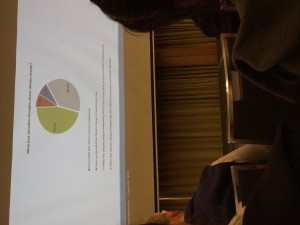 Dr Iain Walker’s keynote address delved into the ‘Public understanding of climate change: Wonder, opportunity, confusion and contradiction’. He presented a range of data based on CSIRO surveys targeting Australian perceptions on climate change. There was evidence of great confusion and contradiction around the impact of climate change, with interesting conclusions being:
Dr Iain Walker’s keynote address delved into the ‘Public understanding of climate change: Wonder, opportunity, confusion and contradiction’. He presented a range of data based on CSIRO surveys targeting Australian perceptions on climate change. There was evidence of great confusion and contradiction around the impact of climate change, with interesting conclusions being:
- Most Australians accept climate change is happening, but are split on whether human activity contributes to it.
- Emotional reactions to climate change are varied, but few help energise positive behavioural responses.
- Many people engage in pro-environmental behaviours, but often not for pro-environmental reasons.

‘Astronomy: revealing the hidden universe through science and technology’ was a keynote enthusiastically presented by Dr John Morgan. He spoke about how astronomy is one of the oldest sciences and how it is a great subject for illustrating how science works.
Dr Morgan compared Newton’s Theory of Gravity and “Ethnoscience” to show how knowledge of astronomy has been explained differently through the centuries and across cultures to describe natural phenomena. He concluded with two memorable statements:
- Astronomy opens a window on an exciting, dynamic universe.
- The intersection of Science, Technology and Engineering is an exciting place to be!
The ASTA forum provided an opportunity to learn what had occurred this year. ASTA is the highest voice to the government about Science Education in Australia. Attending CONASTA gave me the invaluable opportunity to connect with significant people and companies connected with STEM education. This has sparked my interest to become more involved with my state’s Science Teachers Association (STAQ). The various resources, professional development workshops, conferences and news provided by STAQ will be a great personal and professional boost for me as a pre-service teacher.
WEDNESDAY
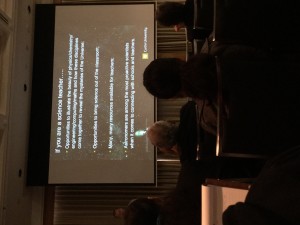
Professor Steven Tingay delved into ‘The Square Kilometre Array (SKA) and its precursors: the ultimate machine for astrophysics’. The SKA is an international mega-science project to build the next grand observatory for astronomy at radio wavelengths. Telescopes are being constructed in Western Australia and South Africa to seek answers to these key questions:
- How do galaxies evolve?
- What is dark energy?
- Was Einstein right about gravity?
- What generates giant magnetic fields in space?
- Are we alone?
Professor Tingay highlighted the fact that, for anyone who is a science teacher, the SKA will provide an opportunity to bring science out from the classroom. It will be able to illustrate the beauty of physics, chemistry, engineering, computing and maths, showing how these disciplines together may reveal some of the mysteries of the Universe.
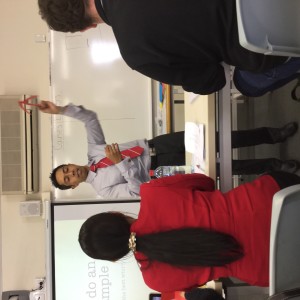
A workshop on ‘Scaffolding experimental inquiry’ was presented by Dr Harry Kanasa. He presented a template to apply to various year levels where science students would:
- Identify independent, dependent and controlled variables.
- Construct and test hypotheses.
- Appropriately display data in tabular and graphical forms.
- Analyse and draw conclusions from found data.
A method of identifying variables that I was unfamiliar with was “Cows Moo Softly”. It was interesting to see how this method could be adapted to suit various year levels.
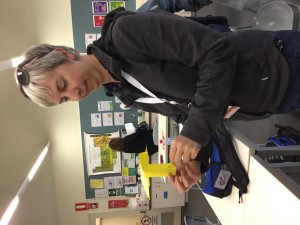
We participated in a mock experiment using the scaffolding provided to make a paper whirly bird. The impacts of Cause and Effect on the various materials, designs and desired outcomes of the whirly bird were discussed and possibilities were listed. In pairs we tested different causes and how they impacted flight duration. Over a short time span I found it interesting to see patterns emerge when causes were compared.
THURSDAY
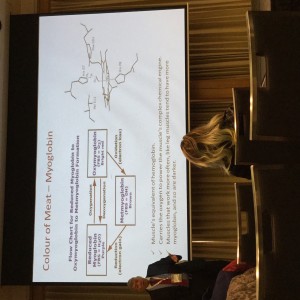 ‘Cooking steak in the classroom’ was an intriguing presentation by Professor Garry Lee on our last morning. He elaborated on how the simple act of cooking a perfect steak comes down to balancing the denaturing of proteins inside the steak with creating tasty chemical reactions on the outside of the steak. Cooking a steak can be used to demonstrate many principles, including:
‘Cooking steak in the classroom’ was an intriguing presentation by Professor Garry Lee on our last morning. He elaborated on how the simple act of cooking a perfect steak comes down to balancing the denaturing of proteins inside the steak with creating tasty chemical reactions on the outside of the steak. Cooking a steak can be used to demonstrate many principles, including:
- Heat of vaporisation
- Microbiology
- Physics of light and heat
- Sensory science
- Chemistry
- Psychology
- Materials science
Professor Lee discussed the colour of meat and how it could be used to explain oxidation and reduction. He also provided thorough explanations and instructions for cooking the perfect steak.
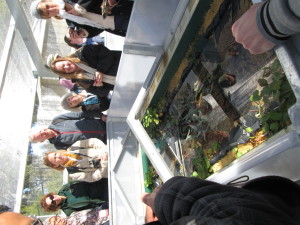
Last, but not least, there was the opportunity to embark on a full day tour of a variety of locations around Perth. I chose to attend Perth Zoo where there was a private tour of large area behind the zoo, meeting the Western Swamp Tortoise and the Short-beaked Echidna.
The Western Swamp Tortoise is critically endangered. It was feared extinct for over 100 years. By chance the tortoise was rediscovered in 1953, in two small habitats in the Swan Valley. The Zoo has a breeding program, from where tortoises at a specific size are released back into their natural habitats.
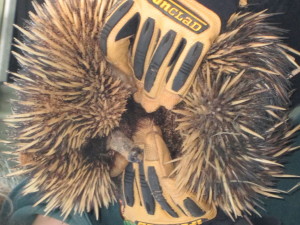
The Short-beaked Echidna is not endangered, rather the breeding program implemented at the Zoo has provided valuable insight into echidna reproduction. The knowledge gained may help with the captive breeding of the critically endangered Long-beaked Echidna. Through video monitoring systems, the mating and reproductive habits were observed. It was discovered that the gestation period was 23 days, after which the female echidna laid an egg. The baby hatched after 10 days and was carried around by its mother for two months in a pouch-like skin fold. The baby is called a ‘puggle’. The mother carried the baby around until its spines start to develop at which point she deposited the puggle in a specially constructed nursery burrow. The mother returned to feed it approximately every 3-6 days. It was interesting to learn how much occurs behind the scenes of the Zoo to ensure the preservation of a variety of animals.
CONASTA 64 has been an incredible, eye-opening opportunity.
I am already excited for CONASTA 65 – Superheroes of Science – Unmask Your Potential!

